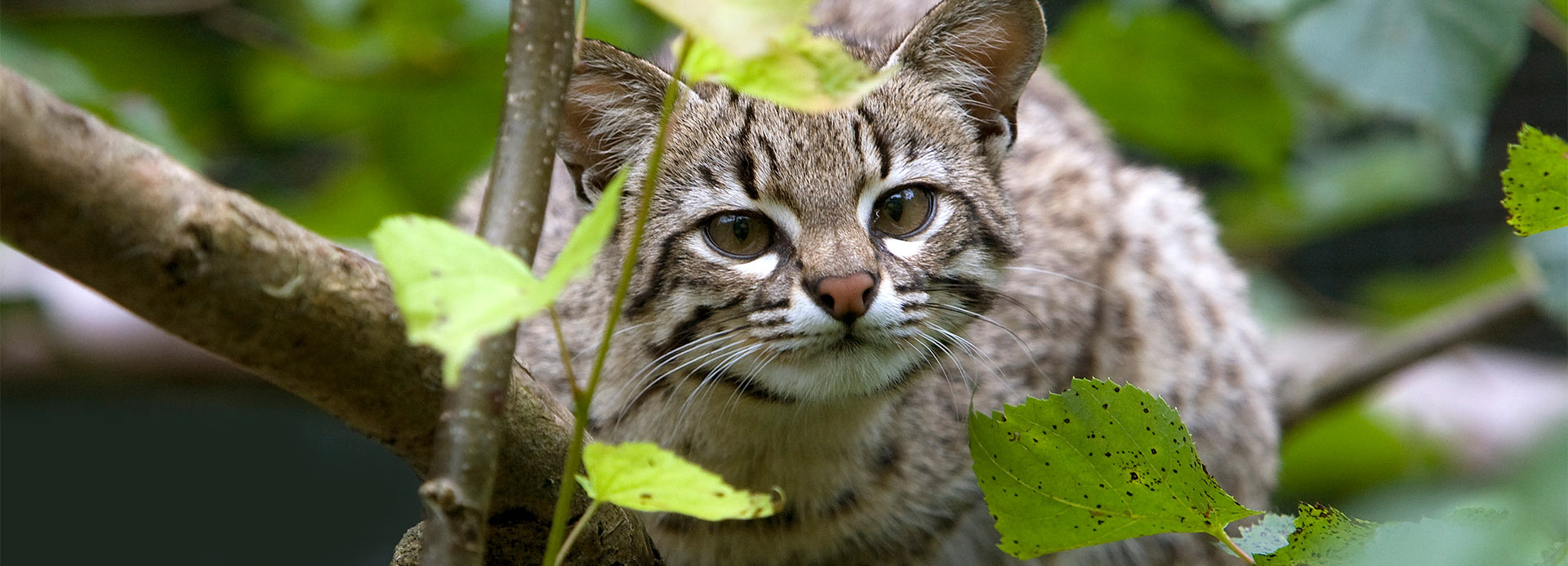Geoffroy's Cat: A Cat that Went from Myth to Fame in Las Torres Reserve
- 4 mins
Las Torres Reserve (previously known as Estancia Cerro Paine) became a protected area and a natural and cultural reserve in 2013. This conversion, conservation, became a fundamental pillar of development, with a cat as the protagonist.
“Sir, someone’s cat has escaped,” said a technician who was installing solar panels in Las Torres Reserve in 2015. He had seen a small cat in the middle of bushes, far from the hotel and houses, where there are no domesticated animals.
This cat was something of a myth. The owners of the Reserve and a few former works had mentioned seeing it long before, but no one had proof. Turns out, it was Geoffroy’s cat or Leopardus geoffroyi, the scientific name of one of the five native cat species and one of the smallest in this region.
 Geoffroy's Cat Las Torres Reserve
Geoffroy's Cat Las Torres Reserve
Evidence of Record of Its Appearance
In 2019, through fauna monitoring, the cat was recorded carrying its food (a native rodent), evidence that was captured on camera traps installed by the NGO AMA Torres del Paine. The confirmation of its existence in Torres del Paine became a milestone, as the feline's presence was a positive sign of the relationship between tourism and wildlife; the cat went from legend to reality.
Several years later, after the first record of the cat, and after thousands of tourists had passed through using local tourist services, Geoffroy’s cat became news after it was spotted again and this time photographed. Thanks to the records of the cat’s presence near Hotel Las Torres and sightings of the cat near a campsite, the little cat rose to fame on social media and a local news channel in Chile.
This magnificent photo of the charismatic feline went viral, capturing the attention of many people. For Las Torres Reserve, this new record suggests a coexistence between tourism and this little studied species. It has not been displaced from its habitat, an obvious result of conservation efforts.
 Geoffroy's Cat Las Torres Reserve
Geoffroy's Cat Las Torres Reserve
¿Do You Want to Know More about this Little Cat?
Leopardus geoffroyi is a species of cat with a wide range in South America, however, its presence was unknown in Chile. These findings are important to put focus on this hard-to-observe species, which often falls into the background since more attention is put on large cats, such as pumas. Due to this sighting, Leopardus geoffroyi enjoyed more fame than its larger relative on this occasion.
This small cat can be found in Bolivia, Southern Brazil, the Paraguayan Chaco, Uruguay and Southern Argentina. From these regions the cat enters Chile and can be found in La Araucanía, Aysén, as well as Magallanes regions. Its habitat here is the dense vegetation in the Patagonia steppe, where it mainly avoids being seen by predators such as pumas or foxes.
Like other wild cats, threats to its existence include: clandestine hunting, feral dogs and the destruction of its habitat. These factors are decisive in the decline of its population, which is contained, in part, by protected areas such as Torres del Paine National Park.
 Geoffroy's Cat Las Torres Reserve
Geoffroy's Cat Las Torres Reserve
Animal Consciousness
In Chile, Leopardus geoffroyi is categorized as “near threatened”, which means, if we continue to deteriorate its habitat, or it continues to be hunted, it will become “vulnerable”, and later “endangered”. The records of this cat’s presence is important knowledge about the species and helps generate awareness and encourage people to join conservation efforts to ensure its survival.
So! If you see a wild cat - watch it from a distance, do not approach it and do not feed it. Together, we can join efforts to move toward a sustainable society that will leave treasures of nature, like this cat, to future generations.
Las Torres Reserve is committed to the conservation of all the fauna in its area. Without your help, it's a difficult task, so please take care and respect all the notices and rules in the protected areas you are visiting. Together, we can make a difference.
If you want more information or would like to know more about what we do, subscribe now to our newsletter.




